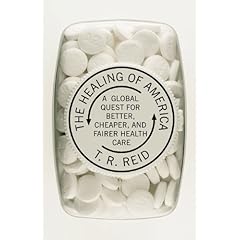Crosses and other religious symbols help to drive the plot of The Lost Symbol. Are the images used in an offensive way? Philip Hensher writes in a review of The Lost Symbol in the Spectator:
“The plot, naturally, is all to do with the concealment of wisdom within sacred texts, and as it unfolds, it becomes first moronic and then somewhat offensive. Moronic, because it seems to believe that wisdom and knowledge are things which are acquired by placing a bit of gold on top of a bit of stone, and then wiping off some wax. Brown’s heroes remind me of Hardy’s Jude, who thought that you could understand Greek if you cracked a simple code in the dons’ safekeeping:
“Don’t you see? These [Biblical phrases] are code words, Robert. ‘Temple’ is code for body. ‘Heaven’ is code for mind. ‘Jacob’s Ladder’ is your spine. And ‘Manna’ is this rare brain secretion.
“Not just moronic, but offensive, because the whole historical point of Christianity was that it celebrated its rites entirely openly, unlike any other religion to that point. The huge enlightenment to come, trailed by Brown, doesn’t convince, because he can’t really imagine what it would be, apart from some previously secret beliefs being made generally available. What that would mean, apart from people saying ‘With my temple, I thee worship’ at wedding ceremonies, Brown cannot limn.
“This is taking a bit of fluff all too seriously, but tales of conspiracy are worrying when they become as massively popular as Brown’s stories have done. God knows how many of his readers think there might be some truth in any of this. But even if there were none, it is depressing to see the point to which the bestseller as a form has sunk. Vintage have recently reissued all of Nevil Shute, and to read a hugely popular book of 50 years ago next to The Lost Symbol is to witness a painful decline in quality and sheer class. A novelist like Brown would never risk an extended set-piece like the motor race in On the Beach, or the details of capital investment in A Town Called Alice. Or, come to that, the thrillingly extended card game in the first part of Ian Fleming’s Moonraker. These are novels which, though aiming at popularity, respected their readers and were possessed of a decent level of craft. Nowadays, we are reduced in our thrill-seeking endeavours to listening to Dan Brown, whose idea of giving a reader a good time is droning:
“Franklin Square is located in the northwest quadrant of downtown Washington, bordered by K and Thirteenth streets. It is home to many historic buildings.”
 I was going to read The Lost Symbol over the weekend but picked up T. R. Reid’s elegant indictment of health care in the U.S., The Healing of America (Penguin, 277 pp., $25.95). And I was hooked after the first sentence: “If Nikki White had been a resident of any other rich country, she would be alive today.”
I was going to read The Lost Symbol over the weekend but picked up T. R. Reid’s elegant indictment of health care in the U.S., The Healing of America (Penguin, 277 pp., $25.95). And I was hooked after the first sentence: “If Nikki White had been a resident of any other rich country, she would be alive today.” Hallinan focuses on cognitive or perceptual errors that affect behavior, or factors such as change blindness (an inability to notice shifts in what we see) and overconfidence (a trait that shows up more in men than women and influences the mistakes of each sex). But he writes at times about behavior that affects perceptions, such as not getting enough sleep. And this dilutes slightly the focus of his book, which draws on research in psychology, economics, and other fields. Why deal with fatigue but not with such physical conditions as chronic pain or stress that can also cause errors?
Hallinan focuses on cognitive or perceptual errors that affect behavior, or factors such as change blindness (an inability to notice shifts in what we see) and overconfidence (a trait that shows up more in men than women and influences the mistakes of each sex). But he writes at times about behavior that affects perceptions, such as not getting enough sleep. And this dilutes slightly the focus of his book, which draws on research in psychology, economics, and other fields. Why deal with fatigue but not with such physical conditions as chronic pain or stress that can also cause errors?
 Need a reason to skip the “Twilight” vampire-romance series beyond that
Need a reason to skip the “Twilight” vampire-romance series beyond that